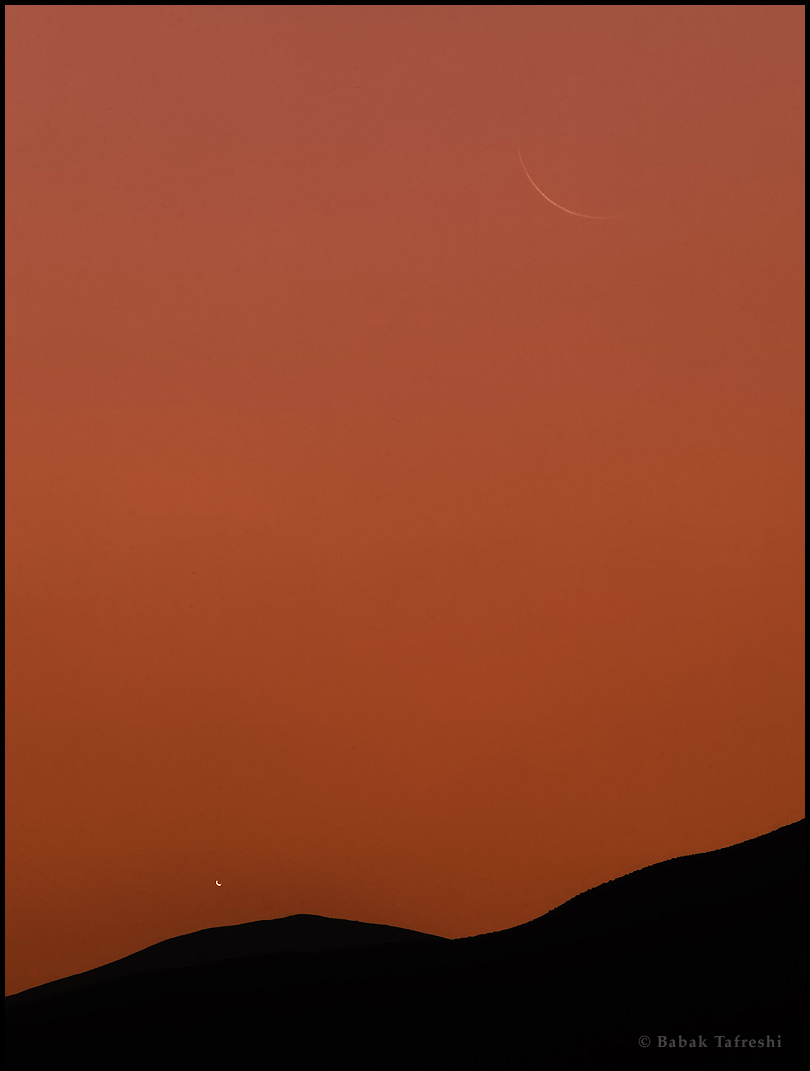|
|
||
|
Home | Latest | Night Sky | Nature | People | Monuments | Motion | Misc. | Search |
||
|
|
Double Crescents - By: Babak A. Tafreshi
The phases of Venus are the different variations of lighting seen on the planet's surface, similar to lunar phases. Have you ever seen planet Venus in its crescent phase? As framed in this telephoto image the crescent Moon meets with planet Venus in the morning sky, only a week after Venus conjunction with the sun. When Venus is near its inferior conjunction with the sun (close to the position of the sun in our sky) it becomes a thin crescent but since it reaches its closest distance to the Earth it also shows its largest apparent size. The crescent can be seen even through a small binocular. Venus disc is small as only 10 arc seconds when its at full phase but its apparent diameter enlarges 6 times to about one arc minute (the Moon is about 30 arc minutes wide) when it is a thin crescent. In 1610 Galileo made the first observations of phases of Venus through his small telescope. However the extreme crescent phase of Venus has been (rarely) observed today with the naked eye but there is no confirmed pre-telescopic record of it in the history. Also interesting in the above image is the difference in surface brightness of Venus and Moon. while Moon is brighter in total magnitude, it seems less shiny than the dazzling Venus because of the Moon's much larger apparent size. The Moon was really thin and I had a bit obscured horizon so the pair was above the local mountains when the sky was bright red. I have used a 400mm telephoto lens.
< Previous ................ Next >
|
|






